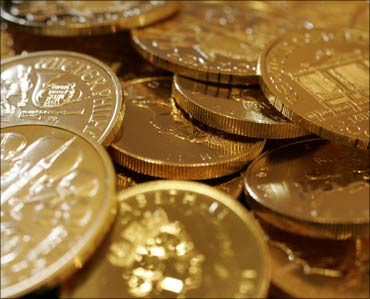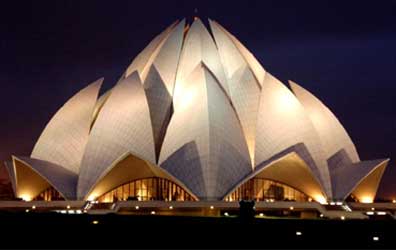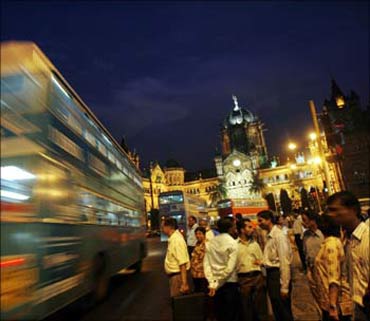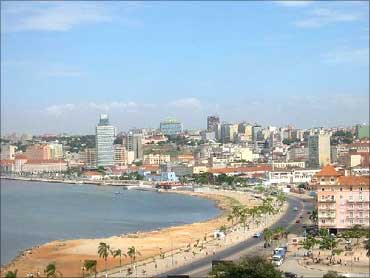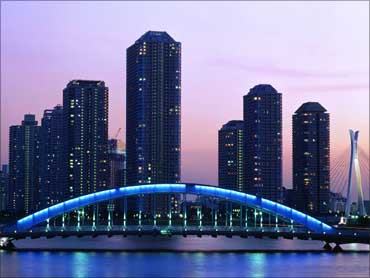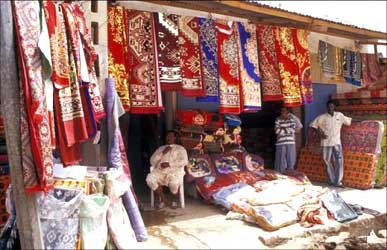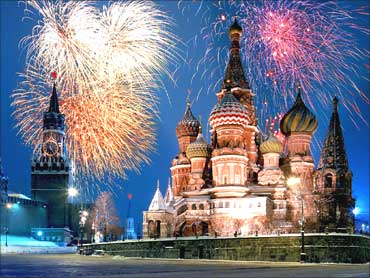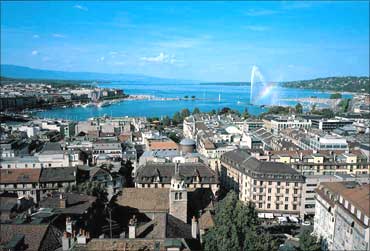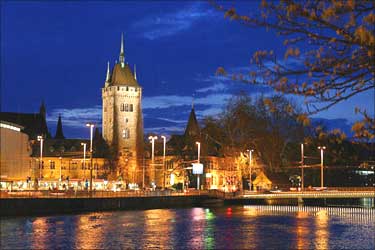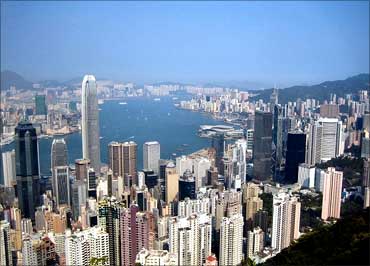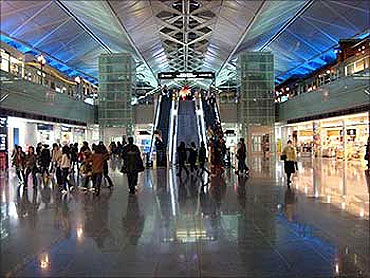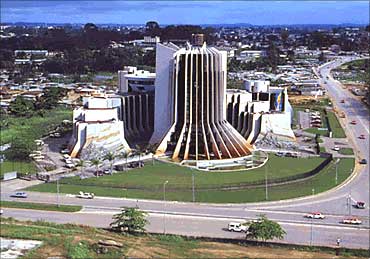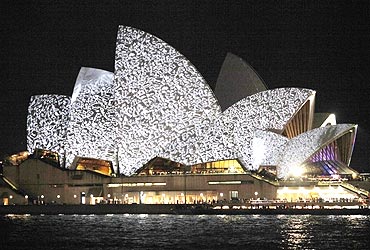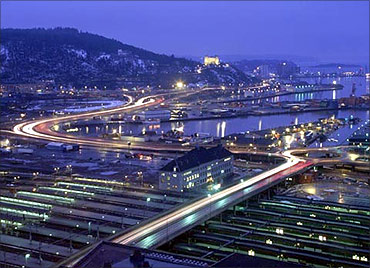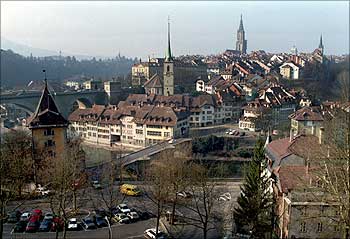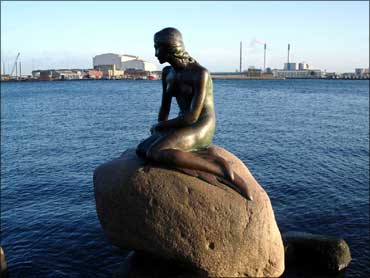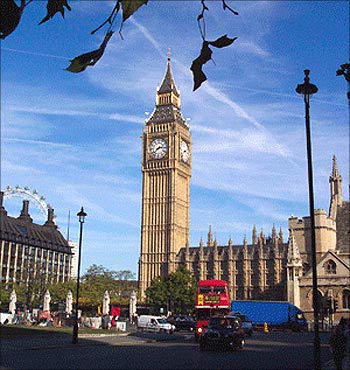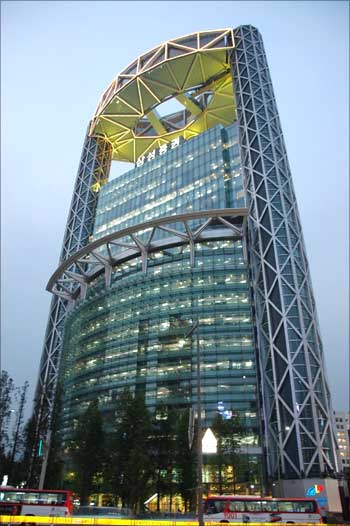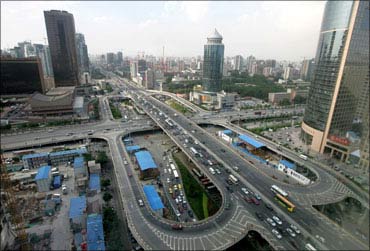 | « Back to article | Print this article |
World's 20 most expensive cities
Global consultancy firm Mercer recently came up with a survey to determine the cost of living of cities across the world.
According to the survey, New Delhi (rank 85) is India's most expensive city followed by Mumbai (rank 95).
The index for the survey is based on cost of living expressed in US dollars.
If the dollar weakens against the local currency of a city, the city becomes more expensive and moves up the index, even if prices expressed in local currency remain the same or even go down.
The survey covered 214 cities across five continents and measures the comparative cost of over 200 items in each location, including housing, transport, food, clothing, household goods and entertainment.
Both Rio de Janeiro in Brazil and Libreville in Gabon occupy the 12th place in the survey.
Click NEXT to know more about world's 20 most expensive cities, read on. . .
World's 20 most expensive cities
Rank 85: New Delhi
New Delhi, the capital city of India, has the second highest gross domestic product in the country.
And although it cannot rival Mumbai in terms of contribution to the growth of the Indian economy, Delhi is no pushover.
It contributes 4.94 per cent to all-India gross domestic product.
Connaught Place, one of India's largest financial centres, is located in the heart of Delhi. Delhi's key service industries, backed by as strong and well laid out infrastructure, include IT, telecommunications, hotels, banking, media and tourism.
In recent times, Delhi's manufacturing industry has grown considerably and consumer goods industries have established manufacturing units and headquarters in and around the capital.
Construction, power, telecommunications, health and community services, and real estate form the backbone of Delhi's economy.
The capital's retail industry is one of the fastest growing industries in India.
Click NEXT to read further . . .
World's 20 most expensive cities
Rank 95: Mumbai
Mumbai, the commercial and financial capital of India, is not only the city with the highest GDP in India, it also ranks among the world's top ten trade centres.
The city contributes 25 per cent of industrial output and 70 per cent of capital transactions to India's economy.
The city accounts for about 1 per cent of the total population in India but has a per capita income which is almost three times that of India. Mumbai accounts for 14 per cent of India's income tax collections and 37 per cent of the corporate tax collections in the country.
Click NEXT to read further . . .
World's 20 most expensive cities
Rank 1: Luanda
Luanda is the capital and the largest city of Angola.
It has an excellent natural harbour; the chief exports are coffee, cotton, sugar, diamonds, iron, and salt.
The city also has a thriving building industry, an effect of the nationwide economic boom experienced since 2002, when political stability returned with the end of the civil war.
Click NEXT to read further . . .
World's 20 most expensive cities
Rank 2: Tokyo
Tokyo was originally a small fishing village named Edo.
It is one of the three world finance 'command centres', along with New York City and London.
Tokyo was rated by the Economist Intelligence Unit as the most expensive (highest cost-of-living) city in the world for 14 years in a row ending in 2006.
The Tokyo Stock Exchange is Japan's largest stock exchange, and second largest in the world by market capitalisation.
Click NEXT to read further . . .
World's 20 most expensive cities
Rank 3: N'Djamena
The largest city in Chad, N'Djamena is a port city on the Chari River, near the confluence with the Logone River.
It is a regional market for livestock, salt, dates, and grains.
Meat, fish and cotton processing are the chief industries, and the city continues to serve as the centre of economic activity in Chad.
Click NEXT to read further . . .
World's 20 most expensive cities
Rank 4: Moscow
The city is named after the river Moskva.
Moscow is one of largest city economies in Europe and it comprises approximately 20 per cent of Russian gross domestic product.
In 2006, Mercer Human Resources Consulting named Moscow as the world's most expensive city for expatriate employees, ahead of Tokyo.
The Cherkizovskiy marketplace is the largest marketplace in Europe with daily turnover of about $30 million and about ten thousand sellers from different countries (including China, Turkey, Azerbaijan and India).
Primary industries in Moscow include chemical, metallurgy, food, textile, furniture, energy production, software development and machinery.
Click NEXT to read further . . .
World's 20 most expensive cities
Rank 5: Geneva
Geneva's economy is mainly services oriented. The city has a finance sector, which specialises in private banking and financing of international trade. It is also an important centre of commodity trade.
Watchmakers, Baume et Mercier, Charriol, Chopard, Franck Muller, Patek Philippe, Gallet, Jaeger-LeCoultre, Rolex, Raymond Weil, Omega, Vacheron Constantin, and international producers of flavours and fragrances, Firmenich and Givaudan, have their headquarters in Geneva.
The Geneva Motor Show is one of the most important international auto-shows. The show is held at Palexpo, a giant convention centre located next to the International Airport.
It is the second-most-populous city in Switzerland.
Click NEXT to read further . . .
World's 20 most expensive cities
Rank 6: Osaka
Osaka literally means 'large hill' or 'large slope'.
Historically, Osaka was the centre of commerce in Japan.
However, many major companies have now moved their main offices to Tokyo. Panasonic, Sharp, Sanyo, video game maker Capcom are still headquartered in Osaka.
The Osaka Securities Exchange specialises in derivatives such as Nikkei 225 futures.
Click NEXT to read further . . .
World's 20 most expensive cities
Rank 7: Zurich
Zurich is not only the largest city in Switzerland is also a leading financial centre.
The most important sector in the economy of Zurich is the service industry, which employs nearly four fifths of workers.
Other important industries include light industry, machine and textile industries and tourism. Most Swiss banks have their headquarters in Zurich.
The Swiss Stock Exchange, established in 1877, is one of the most important stock exchanges in the world.
Zurich is also the world's largest gold trading centre.
Click NEXT to read further . . .
World's 20 most expensive cities
Rank 8: Singapore
Singapore has a highly developed market-based economy. Along with Hong Kong, South Korea and Taiwan, Singapore is one of the Four Asian Tigers.
The economy depends heavily on exports and refining imported goods, especially in manufacturing.
Manufacturing constituted 26 per cent of Singapore's GDP in 2005.
The manufacturing sector boasts of electronics, petroleum refining, chemicals, mechanical engineering and biomedical industries.
Singapore has one of the busiest ports in the world and is the world's fourth largest foreign exchange trading centre after London, New York City and Tokyo.
Click NEXT to read further . . .
World's 20 most expensive cities
Rank 9: Hong Kong
Hong Kong was once described as the world's greatest experiment in laissez faire.
It still maintains a highly developed capitalist economy, ranked the freest in the world by the Index of Economic Freedom for 15 consecutive years.
Hong Kong's currency is the Hong Kong dollar, which has been pegged to the US dollar since 1983.
It imports most of its food and raw materials.
Much of its exports consist of re-exports, which are products made outside of the territory, especially in mainland China, and distributed via Hong Kong.
Click NEXT to read further . . .
World's 20 most expensive cities
Rank 10: Sao Paolo
Sao Paulo, in Brazil, is transforming from a strong industrialised base into a service and technology-oriented offshoring location.
The city has a mix of global multinational executives who have their BPOs and contact centers providing IT services and R&D.
Brazilian exports are currently scaling new heights, its major export products being aircraft, coffee, automobiles, soybean, iron ore, orange juice, steel, ethanol, textiles, footwear, corned beef and electrical equipment.
Click NEXT to read further . . .
World's 20 most expensive cities
Located on the Pacific coast in the Chūbu region on central Honshū, it is the capital of Aichi Prefecture and is one of Japan's major ports.
Nagoya's main industry is the automotive business, as many Japanese automotive companies are based out of Nagoya.
Many Japanese automotive suppliers such as DENSO, Aisin Seiki, Toyota Industries, JTEKT or Toyota Boshoku among others are headquartered in Nagoya or suburbs of Nagoya.
Robot technology is a rapidly developing industry here.
Nagoya has the second best airport in the world in the 5-15 million passengers' category.
Click NEXT to read further . . .
World's 20 most expensive cities
Rank 12: Rio de Janeiro
Rio de Janeiro has the second largest gross domestic prodcut amongst all cities in Brazil.
With newer employment and business opportunities rising in Rio, the city has been growing at a breakneck pace.
Brazil is the largest national economy in Latin America, the world's 10th largest economy at market exchange rates and the ninth largest in purchasing power parity, according to the International Monetary Fund and the World Bank.
The country is known for its booming agricultural, mining, manufacturing and service sectors, as well as a large labour pool.
And Rio typifies all of this.
Click NEXT to read further . . .
World's 20 most expensive cities
Rank 12: Libreville
The city is a port on the Komo River, near the Gulf of Guinea. It is the capital and the largest city of Gabon.
Libreville is home to shipbuilding and brewing industries, and sawmills. The city exports raw materials such as wood, rubber and cocoa.
Click NEXT to read further . . .
World's 20 most expensive cities
Sydney is the largest and most populous city in Australia and the state capital of New South Wales.
The site of the first British colony in Australia, Sydney was established in 1788 at Sydney Cove by Arthur Phillip, commodore of the First Fleet as a penal colony.
The city is built on hills surrounding Port Jackson which is commonly known as Sydney Harbour, where the iconic Sydney Opera House and the Harbour Bridge are featured prominently.
Sydney has a reputation as an international centre for commerce, arts, fashion, culture, entertainment, music, education and tourism.
Click NEXT to read further . . .
World's 20 most expensive cities
Rank 15: Oslo
Oslo is the capital and the largest city in Norway.
Founded around 1048 by King Harald III of Norway, the city was largely destroyed by a fire in 1624.
The Danish Norwegian king Christian IV rebuilt the city as Christiania (briefly also spelt Kristiania).
In 1925 the city reclaimed its original Norwegian name, Oslo.
Oslo is the cultural, scientific, economic and governmental centre of Norway.
The city is also a hub of Norwegian trade, banking, industry and shipping.
It is also an important centre for maritime industries and maritime trade in Europe.
Click NEXT to read further . . .
World's 20 most expensive cities
Rank 16: Bern
The city of Bern or Berne is the Bundesstadt (federal city, de facto capital) of Switzerland, and, with 122,658 people, the fourth most populous city in Switzerland.
There are a number of initiatives which have been taken by the city council to maintain its pristine cleanliness and its environmentally friendly reputation.
The historic center of Bern has been featured in the list of UNESCO World Heritage Sites since 1983, and Bern is among the world's top ten cities for the best quality of life.
Click NEXT to read further . . .
World's 20 most expensive cities
Copenhagen is the economic and financial centre of the Scandinavian-Baltic region.
Besides the services industry, life science and research & development plays a major role in the economy of the city.
Major Danish biotech companies like Novo Nordisk and Lundbeck are located in Copenhagen.
Copenhagen has some of the highest gross wages in the world.
Click NEXT to read further . . .
World's 20 most expensive cities
Rank 18: London
London is a unique concentration of international expertise and capital, with a supportive legal and regulatory system, an advanced communications and information technology infrastructure and an unrivalled concentration of professional services.
Central London is home to the headquarters of more than half of the UK's top 100 listed companies (the FTSE 100) and more than 100 of Europe's 500 largest.
London itself generates approximately 20 per cent of the UK's GDP.
Financial services and tourism remain London's biggest industries. While around 325,000 people were employed in financial services in London until mid-2007, the city's tourism sector employs around 350,000 full-time workers.
Click NEXT to read further . . .
World's 20 most expensive cities
Rank 19: Seoul
Seoul's influence in business, international trade, politics, technology, education and entertainment all contribute to its role as a prominent global city.
Home to some of the world's largest conglomerates such as Samsung, LG and Hyundai-Kia.
Seoul was Asia's most expensive city to live in 2007, and the third most expensive city worldwide.
It is ranked first on the Digital Opportunity Index, with the highest broadband internet penetration of any city. Seoul's Digital Media City is the world's first complex for high-tech technologies and a test-bed for futuristic IT and multimedia applications.
Seoul is the only city in the world featuring DMB, a digital mobile TV technology and WiBro, a wireless high-speed mobile internet service, as well as a 100Mbps fibre-optic broadband network, which is being upgraded to 1Gbps by 2012.
Although Seoul accounts for only 0.6 per cent of South Korea's land area, it generates 21 per cent of the country's entire GDP.
Many international banks have branches in Seoul, including Citigroup, Deutsche Bank, HSBC.
One of the largest exchange banks, the Korea Exchange Bank, is also headquartered in Seoul.
Click NEXT to read further . . .
World's 20 most expensive cities
Rank 20: Beijing
Beijing, also known as Peking, is a metropolis in northern China and the capital of the People's Republic of China.
It is the political, educational, and cultural centre of the country.
Beijing is among the most developed cities in China.
It was the first post industrial city in mainland China.
Beijing is home to 26 Fortune Global 500 companies.
